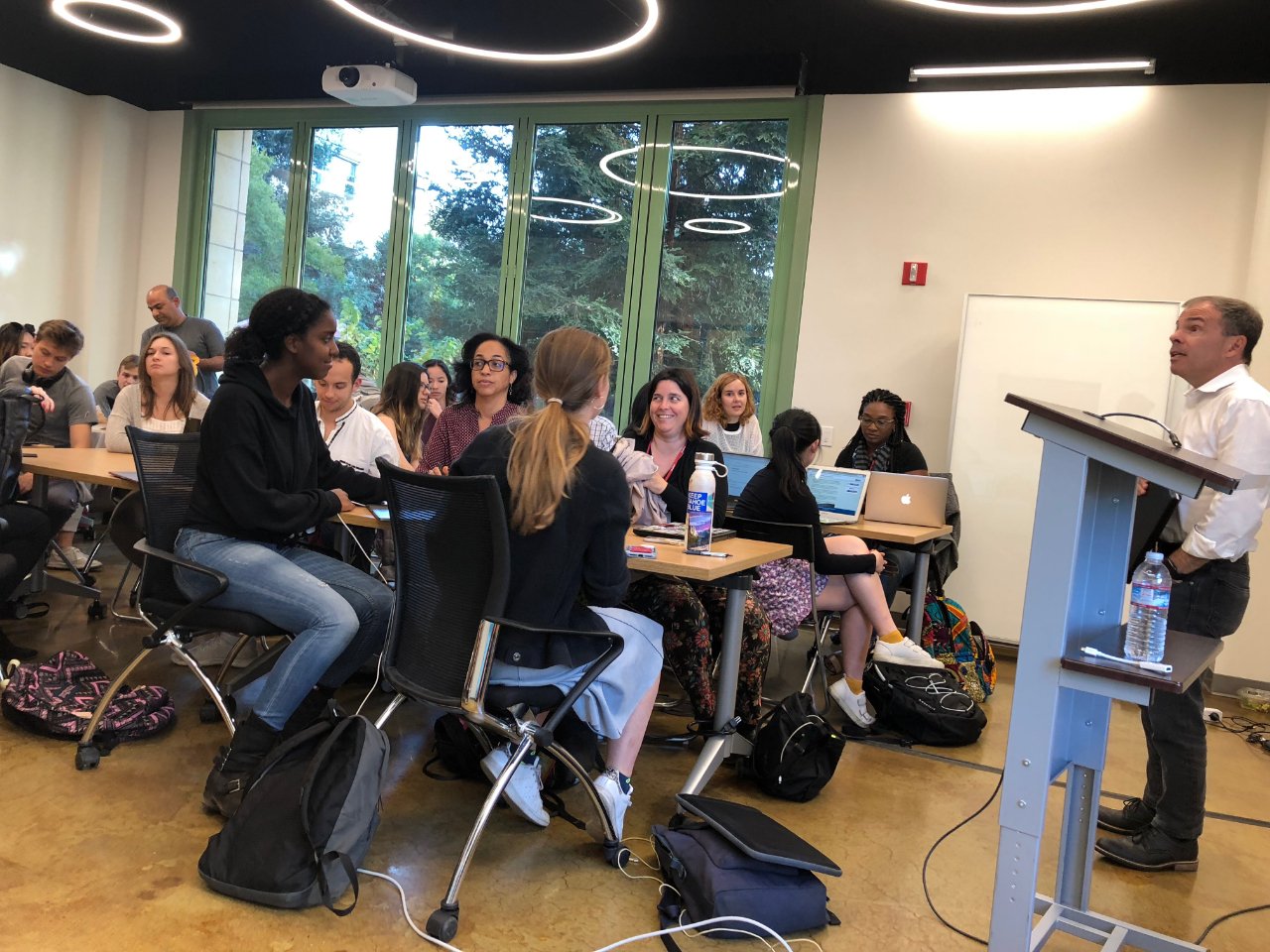COMM 281/CS 206: “Exploring Computational Journalism” is an interdisciplinary project-based class that examines different ways that artificial intelligence, data science and data visualization can be applied to journalism. The course, which is currently being offered for the third time, is co-taught by communications lecturer R.B. Brenner, computer science professor and director of the Brown Institute for Media Innovation Maneesh Agrawala and communications lecturer and founder of Google News Krishna Bharat.
According to Agrawala, the course is part of the broader Stanford Journalism and Democracy Initiative, which provides avenues for individuals on campus to work on projects that use data and computation to aid journalism.
In the course, Stanford students work with approximately 20 mid-career journalists from the John S. Knight (JSK) Journalism Fellowship Program on various projects that use computational techniques to create tools for the media sphere. Students and JSK fellows ranked their top three preferences from a list of projects provided by the professors and were then assembled into teams that included students from both technical and media backgrounds. Those teams are currently working on their projects under close guidance from the professors.
“In the first two weeks, you have a blueprint for what to build, so that you can quickly go ahead and build some momentum and expertise in that space,” Bharat said. “We help them during that phase. Once they’ve finished that, we suggest a few directions they can take and what we expect at the end of the course, but they are free to take it in a slightly different direction.”
According to Bharat, the first iteration of the course was a seminar that brought computer scientists and journalists together to read papers and report on various aspects of computational journalism. However, the teaching team soon realized that members of the class would benefit more from working on their own projects, and the course was redesigned to be more hands-on.
For one current project, mechanical engineering masters student Vincent Chow M.S. ’19 is working with JSK fellow and Botswanan journalist Joel Konopo (among other team members) on a project that examines how politicians spread misinformation on Twitter. Chow said he is particularly enjoying the project’s real-world applications and relevance.
“I think the project aspect of the class is exciting, because it helps motivate people,” Chow said. “I’m getting a chance to actually work with people like Joel, who are veteran experts in their own fields.”
Konopo, for his part, was drawn to the class because of his own experience as a journalist and for the opportunity it provided to work with individuals who share his interests.
“I enjoy working with a diverse group of people who are very dedicated and disciplined, and I found the class to be relevant for what I want to do [in my field],” he said.
According to Agrawala, a key goal of the course is to promote collaboration between journalists and computer scientists, with the aim of building mutual understanding of each others’ fields.
“I would say for the computer scientists that this class is an opportunity to learn about real world problems in journalism,” he said. “For the journalists, it’s a way to understand better what computers and machines are capable of and — more importantly, perhaps — what they’re not currently capable of. Building a deep understanding of that is really necessary going forward in journalism.”
According to Brenner, the interdisciplinary nature of the projects mirrors what the future of journalism will look like as computational tools play an increasingly large role in newsrooms.
“[This class] is really the idea of what today and the future should be,” Brenner said. “[We are] taking advantage of the best of engineering and the best of journalism, but that can’t be done overnight. The class is modeling … a form of collaboration that sadly right now exists in relatively small numbers in journalism, but that we hope can scale.”
Contact Ruth-Ann Armstrong at ruthanna ‘at’ stanford.edu.
